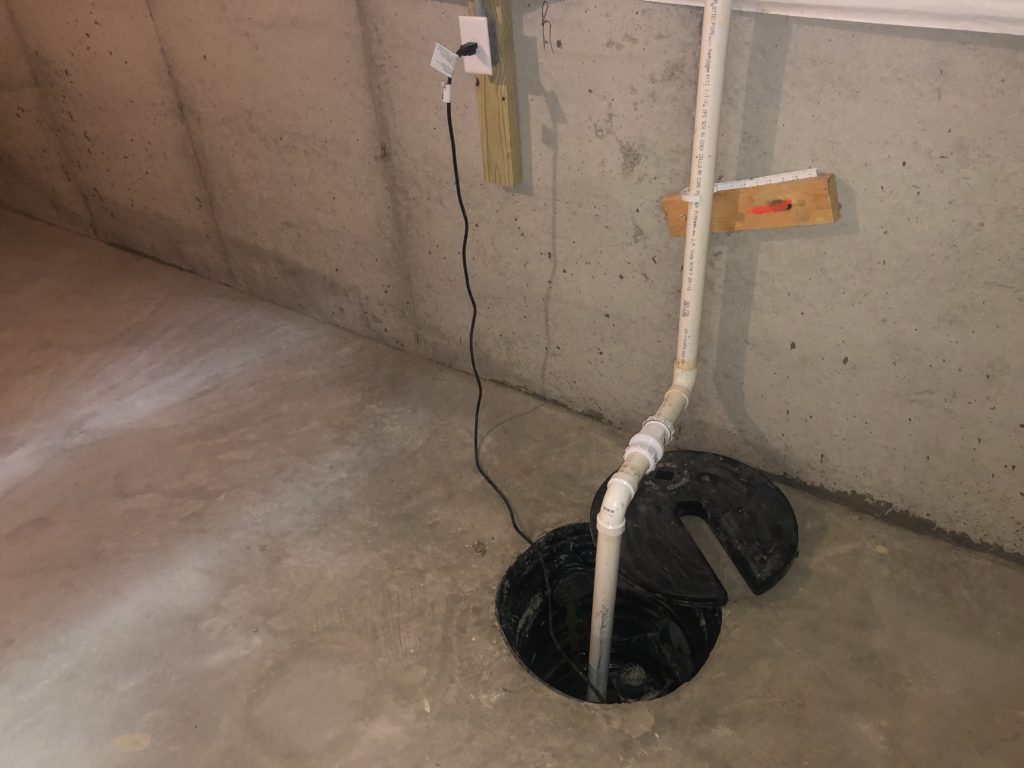The content below about Cleaning & Maintenance Tips for Your Home's Sump Pump is really enjoyable. Check it out for your own benefit and decide what you think of it.

Sump pumps are critical components in several homes, particularly in areas susceptible to flooding or too much moisture. They help stop water damages by effectively getting rid of excess water from cellars or crawl spaces. Nevertheless, like any other device, sump pumps need routine maintenance to ensure they function effectively when required one of the most. Cleansing your sump pump is an essential part of its upkeep, and recognizing how to do it properly can save you from costly fixings and potential calamities.
Intro
Maintaining a tidy sump pump is vital for its correct performance and longevity. Ignoring this necessary task can result in clogs, malfunctions, and eventually, water damage to your residential property. Therefore, finding out just how to clean up a sump pump is essential for homeowners that depend on these devices to keep their cellars dry and secured.
Understanding the Sump Pump
Before diving right into the cleansing process, it's necessary to have a basic understanding of how a sump pump works. Normally set up in a pit or basin below the basement flooring, a sump pump includes several essential elements, including a pump, a float switch, and a discharge pipe. When water builds up in the pit, the float button activates the pump, which after that pumps the water out via the discharge pipe, far from the building's foundation.
Indications of a Dirty Sump Pump
Recognizing when your sump pump needs cleaning is important for protecting against prospective breakdowns. Some usual signs that suggest a filthy sump pump include weird sounds during procedure, decreased water flow, and noticeable particles in the pit. If you see any one of these signs, it's necessary to clean your sump pump immediately to avoid any kind of more concerns.
Preparing for Cleansing
Before you begin cleaning your sump pump, it's vital to take some security precautions. Begin by shutting off the power to the pump to prevent any kind of electric crashes. Additionally, use suitable protective gear, such as gloves and safety glasses, to shield on your own from dust, debris, and possible virus.
Step-by-step Guide to Cleaning Up a Sump Pump
Shutting Off the Power
Begin by separating the power supply to the sump pump to stop any type of crashes while cleansing.
Removing Debris and Dust
Use a pail or a scoop to eliminate any noticeable debris, dirt, or sediment from the sump pit. Dispose of the debris appropriately to prevent it from blocking the pump or the discharge pipeline.
Cleansing the Pump and Float Switch Over
As soon as the pit is free from debris, carefully get rid of the pump from the pit. Inspect the pump and the float switch for any type of signs of damages or wear. Utilize a soft brush or towel to cleanse the surfaces and remove any built up gunk.
Flushing the System
After cleaning up the pump and float switch, flush the sump pit with tidy water to get rid of any kind of continuing to be dust or sediment. This will certainly assist make certain that the pump operates efficiently and effectively.
Checking for Correct Functioning
Before reinstalling the pump, do a fast test to ensure that the float switch turns on the pump properly. Put some water right into the sump pit and observe the pump's procedure. If everything is functioning appropriately, you can reconstruct the pump and reconnect the power supply.
Maintenance Tips to Keep Your Sump Pump Clean
In addition to routine cleaning, there are a number of maintenance ideas you can comply with to keep your sump pump in optimal condition:
Final thought
Cleansing your sump pump is a vital aspect of its maintenance and guarantees that it runs properly when you need it one of the most. By following the steps laid out in this overview and incorporating routine maintenance right into your regimen, you can prolong the life-span of your sump pump and protect your home from water damage.
6 STEPS ON HOW TO CLEAN A SUMP PUMP PROPERLY
UNDERSTANDING SUMP PUMPS
Your sump pump plays a crucial role in protecting your home by managing and removing excess water. It primarily functions as a “shield”, guarding your basement against the damaging effects of water accumulation. The pump is housed in a sump pit in the lowest part of your basement, and its job is to pump out any water that collects there.
During heavy rainfalls or when snow melts rapidly, water can infiltrate your basement, posing potential risks like flooding, structural damage, and harmful mold growth. Here, the sump pump springs into action, pumping out the intruding water and directing it away from your home.
SAFETY FIRST
Before cleaning, remember to prioritize safety. Disconnect the sump pump from the power source to prevent any accidental electric shocks. Also, wear sturdy gloves to protect your hands from any sharp or dirty components within the pump.
REMOVE THE SUMP PUMP
After ensuring your safety, the next step is to remove the sump pump from its pit. Doing this might require careful maneuvering as you don’t want to damage any pump components. Once removed, clean the sump pit to remove any accumulated debris or sludge.
INSPECT THE PUMP
Inspect the pump for any visible signs of wear or damage. Check the power cord, float switch, and impeller housing. If any components look worn out or damaged, consider replacing them to ensure optimal performance.
CLEAN THE PUMP
Thoroughly clean the pump with warm, soapy water. Make sure to rid it of any dirt, gravel, or other debris that might impede its performance. You can use a toothbrush to clean the small, hard-to-reach parts of the pump.
REINSTALL THE SUMP PUMP
Reinstall the pump into the sump pit Make sure it’s positioned correctly to remove the water effectively Once it’s back in place, reconnect it to the power source TEST THE PUMP
Finally, pour some water into the pit to ensure the pump works correctly. It should start automatically and begin pumping out the water; if it doesn’t, check the power source and the positioning of the pump.
Remember, while cleaning your sump pump is an essential part of home maintenance, hiring a professional plumber for a thorough inspection and cleaning at least once a year is also important. This will ensure that your pump is in optimal condition, ready to protect your home from potential water damage.
BEST PRACTICES FOR CLEANING SUMP PUMP DISCHARGE PIPES
Regular Inspection: Regularly inspect your discharge pipes, especially during heavy rainfall or snowmelt periods. Look for any signs of blockage or damage. Early detection of problems can prevent serious issues down the line. Periodic Cleaning: Over time, sediment and debris can accumulate in the discharge pipes, impeding the flow of water. Regular cleaning helps keep the pipes clear and functioning efficiently. You can use a high-pressure water jet to effectively clean the pipes. Insulation During Winter: In colder climates, discharge pipes can freeze, blocking the outflow of water. Protect your discharge pipes from freezing temperatures by insulating them with foam pipe insulation. This will ensure the sump pump can continue to discharge water even in freezing conditions. Proper Positioning: The discharge pipe should be positioned to direct water away from your home’s foundation. Improper positioning can lead to water seeping back into the basement. Ensure the pipe is long enough and angled correctly. Installation of a Check Valve: A check valve prevents water from flowing back into your sump pit after the pump has pushed it out. Installing a check valve helps maintain the efficiency of your sump pump and reduces the risk of flooding. Minimize Pipe Turns: Every curve or turn in the discharge pipe can decrease the efficiency of water flow. By minimizing turns and bends in your discharge pipe, you can increase the efficiency of your sump pump. https://www.fullspeedplumbing.com/how-to-clean-a-sump-pump-properly9999/

I was brought to that editorial about How to Care for Your Sump Pump from a good friend on a different blog. If you please take a moment to share this blog post if you liked it. Bless you for your time. Return soon.
Click Here